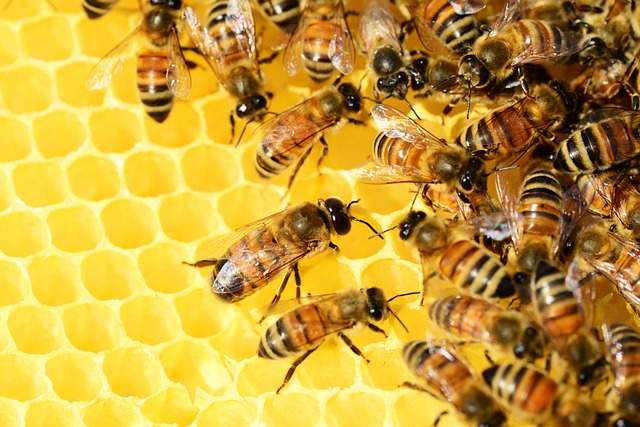It is usually around this time of year in the Portland, Oregon and Vancouver, Washington area that our phone rings nearly non stop for customers needing us to get rid of their bees or wasps. The sun is shining, the weather is warm and those bee and wasp nests that started from their humble beginnings in the spring are by now like a thriving, bustling city. Wasps and bees are everywhere and can form a threat to those that happen to wander near their space. Getting stung by a bee or a wasp is very unpleasant, but there are a number of things you can do to avoid that unpleasant sensation.
First, it is important to know the difference between a bee and a wasp. Most people tend to think honey bees, yellow jackets and hornet are all “bees”, but they are actually quite different. Bees are very useful insects that pollinate the world around us. The blooming flowers and beautiful colors you see in nature are due in large part to bees working tirelessly. Also, honey is awesome. Bees are dying at an alarming rate around the world and this is not good. We do not want to kill bees unless they are posing a direct threat to humans. In almost all situations, a beekeeper can be called to remove a bee nest. At New Leaf Pest Control, we do not ever want to kill bees unless we absolutely have to.
Wasps do not do pollinate or do anything particularly useful, accept for eating certain types of bugs, aphids, etc. They can be social insects like bees, but some wasps are solitary insects. There are many types of wasps like paper wasps, yellow jackets and hornets. Another important distinction is that a wasp can sting multiple time, while a bee can only sting once because of their barbed stinger.
How do you tell the difference between a bee and a wasp?
The main difference in appearance is going to be hair. A bee has hairs on its body and legs and a wasp does not. Each type of nest for a wasp (yellow jacket, paper wasp and hornet) will look different than a bee nest. Yellow jacket nests will typically be in the ground, a hornet or paper wasp will usually be up high in an eave or a tree.
How to avoid getting stung by a bee or wasp in Portland this summer
1- Remain calm. Do not panic and move deliberately and slowly when in contact with bees or wasps.
2- No perfume. Bees and wasps are attracted to flowery smelling perfumes or hair sprays.
3- Do not stand in their path. Bees and wasps often travel in a figure eight pattern. Be aware of the angle at which a bee or wasp is traveling towards their nest. If you are blocking that patch, you will be seen as a threat.
4- Don’t sweat. Seriously, sweat has been known to make them angry. Crazy, right?
5- Do not slap them. If a wasp or bee lands on your skin, the worst thing you can do is slap at them. They usually will not sting unless you are a threat.
If you are unlucky enough to get stung, get yourself out of the area as quickly as possible. When a wasp stings, it releases a pheromone that alerts the nest that you are a threat and you can be swarmed and stung repeatedly.
Hopefully this information is helpful. If you do have a wasp nest near your home and need help getting rid of it in Portland or Vancouver, please give New Leaf Pest Control a call.

